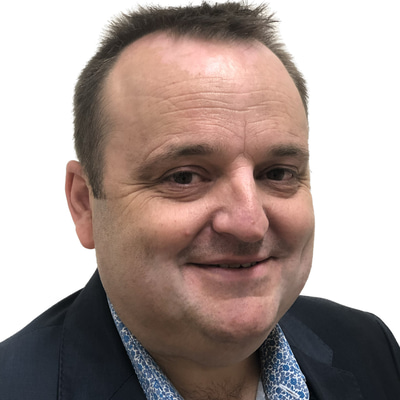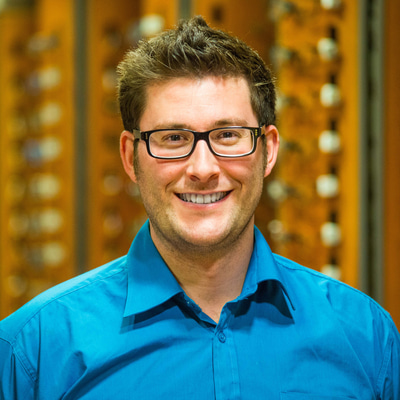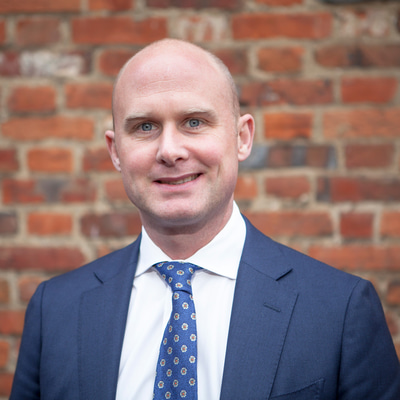- OT
- Life in practice
- Business management
- “We want our reputation that we have diverse patients to remain”
The discussion
“We want our reputation that we have diverse patients to remain”
Four practices share how they’re balancing business need with patient care during the cost of living crisis

03 February 2023
As the cost of living crisis bites, optometry practices from Lancashire to Brighton are negotiating a tightrope of increasing business costs versus duty of care to patients – and especially to those who are potentially already vulnerable.
Neil Heyes, optometrist and practice owner at Heyes Opticians in Ormskirk, explained that top end sales at his practice are not being affected as patients cut back, but that he has noticed more caution “at the middle to bottom end of the range,” and that “people are downgrading a little bit: not having the same varifocal that they had last time, removing the photochromic, or not having the second pair – that sort of thing.”

“It’s anecdotal,” he explained. “If you look purely at sales at the moment, they haven’t dropped. But if you actually ask the staff what’s happening on the ground, they are hearing people say, ‘No I want to keep costs down. I don’t want to have that this time. I’m not going to spend as much on my frame.’”
He added: “I’m having more conversations with patients who are concerned about their electric and their gas. I’ll say to people, ‘you don’t need to upgrade this time.’ They say: ‘Good, because I was struggling to pay the gas bill.’ We’re definitely seeing that. People are talking about it, for sure.”
Laura Whiting, practice manager at Valli Opticians in Hebden Bridge, West Yorkshire, explains that while certain patients are still choosing to pay upfront, “there’s definitely that middle ground where people are more cautious now.”
Patient spending changes were more noticeable than usual in November and December, when the cost of paying for Christmas hit “double barrel with the energy bill crisis,” she said.
“We have a lot of loyal patients who come time and time again, and you know their spend history,” Whiting explained.
“People have said, ‘oh, I need to make sure I can pay my bills this winter.’ It is a little bit awkward, because we’re a business, but we clearly want to retain our patients and not push them away when they’ve got other costs involved.”
Noticing changes of behaviour in long-term patients, for example that those who might have spent a large amount in the past and are no longer doing so, or are requesting to set up a Direct Debit to make their purchase more affordable, is important when balancing business planning and communication with patients, Whiting believes.
She added: “That would never really have happened with certain patients once upon a time.”
That traditionally patients with a high disposable income are not currently being affected but could be in the future is something that Jim Green, owner of Hakim Group independent practices Eyesite (Reading, Brighton, Weybridge and Winchester) and Walsh Opticians (Bogner Regis), is very aware of.
With a patient demographic that values healthcare and are willing to prioritise spending habits accordingly,’ Green acknowledges that the resilience that his practices are seeing due to their patient base could be affected by external factors at any time.
“There are some patients who are currently less affected: they own their own home, they have got savings, and the energy crisis is affecting them, but at the same time, they can absorb that in their day-to-day life,” he said, but “We still have to make sure we’re aware.”
Economic headwinds post-Brexit had already led Green to consider how turbulent the situation might get for his businesses. “We’ve seen this coming for some time. It’s not something that is here one moment and gone the next,” he said.
The question that remains at the forefront of Green’s mind is: “What are we going to do to see it through?”
We have made sure we’ve put private prices in place for certain things that we would have normally just done as goodwill in the past
Business response

Green’s early caution meant the Eyesite practices and Walsh Opticians had developed ‘tools in their armoury’ ahead of the current crisis, that they would be able to call upon when needed. These include a purchase plan allowing patients to purchase spectacles and pay them off over a period of time.
It is something that Green’s practices have had for a while, but he has ensured that the offering is more visible in recent months. It is, he said, “a way of being able to help patients spread the cost.”
At Valli, Whiting also offers an interest-free period on spectacle purchases.
“It’s something we are mentioning a lot more to patients than we might previously have needed to,” she said. “They pay a third upfront, and then they can pay the rest in instalments over six months. That’s something that we talk about a lot.”
Ryan Leighton, CEO of Leightons Opticians and Hearing Care, is looking to extend the group’s interest-free offering.
“We are actively encouraging our teams to provide interest-free payment plans to our patients to help spread the cost, and we are currently researching payment plans over longer time frames to ease the monthly cash burden on patients,” he said.

At the same time, Heyes has found that certain clinical services that he might have previously offered out of goodwill can no longer be sustained by the business.
“We have made sure we’ve put private prices in place for certain things that we would have normally just done as goodwill in the past,” he said. “We can’t do it anymore. We’ve got to make sure we charge for the chair time.”
He added: “You’ve got to look at it from three points of view: the patient point of view, and they’re struggling. You’ve got to look at it from the staff point of view: we don’t want them to struggle. And you’ve got to look at it from the business point of view as well, making sure the business is in a healthy position to provide support to both. Without having that business there next year, everyone will be struggling.”
The product mix that we’ve chosen hasn’t happened by accident. We’re very strategic upon the brands that we put in place
“The right dispensing experience”
The practitioners OT spoke to were clear about the importance of listening to and interpreting customer need when it comes to frame budget, and how that can safeguard business profits.
“Choosing the right dispensing experience means that we see less vulnerability,” Green said. “The product mix we’ve chosen hasn’t happened by accident. We’re very strategic upon the brands that we put in place.”
He added: “It’s imperative that we stay true to our values and principals, by offering our patients highly clinical experience, backed up with a recommendation-led dispensing consultation where we offer a forensic approach to understanding what our patients need, want and desire.”
Heyes is also paying close attention to the frames his practice is supplying.
“We have been very conscious that this is coming, and we’ve made sure we’ve sourced frames, particularly from designer brands, that are a little bit lower in value,” he explained.
“We’ve made sure we’ve got a better offering at a slightly lower price point. We’ll say to patients, ‘Tell us what your budget is, and we will use it as wisely as we can, and make sure we don’t go over it.’ That works well. We’re protecting revenue by making sure patients don’t walk because they can’t afford what they had last time.”
Leighton agrees: “We take a forensic approach to understanding our patients, and their spend behaviours and habits,” he told OT. Delivering relevant communications to existing patients, and expanding the services and products that are available to them, is the group’s strategy, alongside maintaining a high quality of service.
Patient communication is vital in her practice’s small Hebden Bridge community, Whiting said – and it helps that her staff can talk openly to patients about their needs and requirements.We’re protecting revenue by making sure patients don’t walk because they can’t afford what they had last time
“We do get a diverse patient demographic here,” Whiting said. “We can get people who are on benefits who use a voucher towards their spectacles, and then people who don't bat an eyelid at spending £2000.
“It’s about managing what they want without them having buyer’s remorse, and going away and feeling bad for spending that on themselves. You want to get the most revenue in that you can in these quieter months, but also keep your patients. It’s a juggling act.”
She continued: “A lot of people are more vocal in saying that they’ve got a set budget now, which helps. You know straightaway where you need to start in terms of frames. It’s important that my team members emphasise that frame prices start as little as X and go right the way up to X, rather than it being solely on the patient’s choice of style and then them being landed with a frame they can’t afford. It’s about discussing the price points of the frames, and that there is a range – it’s not just what you like that determines what you have to pay.”
“It’s quite a close-knit community,” Whiting added. “Everyone knows everyone, and we want our reputation that we have diverse patients to remain. We’re not just for the higher spenders. We've got a screen in the front window, in this particular branch, that reminds everyone that NHS patients are welcome.”
Support for staff
Alongside his patients, Heyes is equally mindful of the impact the cost of living crisis is having on his practice staff – and whether protecting them might mean making significant changes to his business model in the coming months.
“Staff aren’t immune to it,” he said. “I’ve had staff coming in in the morning saying, ‘It’s great in here, it’s nice and warm." You don't realise, but then they joke that they’re coming into work to warm up, because they haven’t got the heating on. We are very conscious that our staff will need to see some significant rises next year to help them with the cost of living crisis.”
He continued: “On top of that, looking at it from a business point of view, we’re on fixed rates for electricity until March. I’m very conscious that after March, our electricity bill may treble, then we’ve got the changes in business rates coming, and we don’t know what’s going to happen with that. Then, we’ve got to try and look at staff raises.
“When you factor those three things in, you’re immediately looking at putting 10% on your prices. Obviously, you can’t do that with NHS prices. So, for the very first time, we’ve thought: ‘are we doing the right thing with our NHS contract?’ It’s the first time in 30 years of optics that I’ve questioned whether the GOS contract is where we should be as a business.”
It’s the first time in 30 years of optics that I’ve questioned whether the GOS contract is where we should be as a business
Green is also thinking about the future, and the gaps that develop when businesses do fail.
“For us to be able to fulfil our longer-term dream, which is to provide eye care and eyewear for our communities for not just this generation, but generations to come, we’ve got to have a successful business,” he said. “If we haven’t got a successful business, then it’s all going to fail. Making sure we are protecting margin, , and also influencing team behaviours, makes a very buoyant business that is able to move on into a possible recession, whether it be global or a localised one into the UK.”
For Green, working alongside staff is the key to ensuring patients remain happy, even in difficult times.
“We make sure we’re in the practice with the team, standing shoulder to shoulder, so that we are all aligned , so that we can coach the team if there are opportunities for personal growth or opportunities for change, and so that we can take instant feedback from the patients,” he said.
“I will see and hear interactions with patients and team members on the practice floor that I wouldn’t if I was entirely office-based. This way, we can better support, advise and guide to our teams.”


Comments (0)
You must be logged in to join the discussion. Log in